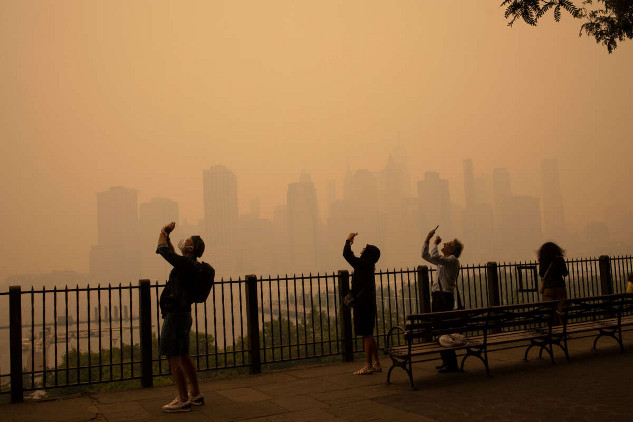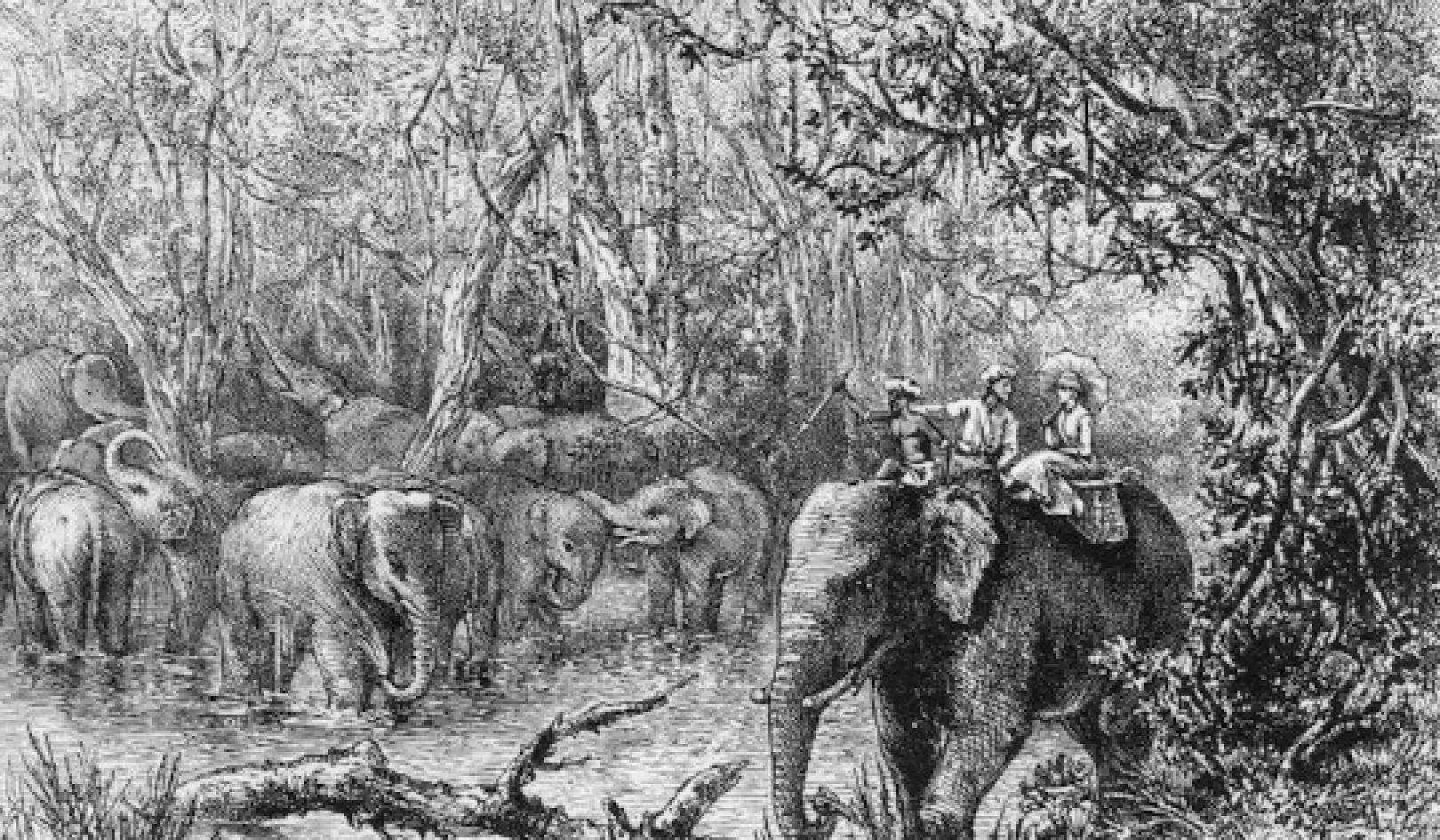
In this Article
- The long-term health effects of wildfire smoke exposure
- How does persistent exposure to PM2.5 from wildfires impact overall health?
- What are the risks for children and vulnerable populations exposed to wildfire smoke?
- The differences in health impacts between short-term extreme and long-term mild smoke exposure
- Steps individuals can take to mitigate the health risks of wildfire smoke

How Wildfire Smoke Affects Long-Term Health
by Stephanie Cleland and Ryan W. Allen, Simon Fraser University
Wildfire smoke has become a common feature of Canadian summers, fuelled by bigger, more intense and more frequent wildfires. In 2023, Canada experienced its worst wildfire season on record, with many communities contending with weeks of hazy, orange skies and frequent air quality alerts.
The 2024 wildfire season started early, with fires currently burning across much of western Canada. Ongoing wildfires near Jasper, Alta. have prompted widespread evacuation and blanketed the province in smoke, triggering air quality advisories.
As climate change increases temperatures, dries out forests and exacerbates drought conditions, our exposure to wildfire smoke is likely to increase.
Air quality impacts of wildfire smoke
Although Canada has seen notable improvements in air quality over the past 30 years, increasingly frequent and intense periods of wildfire smoke threaten to undo this progress. In the last two decades, while emissions from most pollution sources declined, Canadians’ exposure to wildfire smoke has increased by approximately 220 per cent.
As a result, in places impacted by wildfires, the annual average concentrations of PM2.5 are now increasing for the first time in several decades. PM2.5 (particulate matter that is smaller than 2.5 micrometers diameter) are the tiny particles in smoke that impact our health.
As emissions from other sources of PM2.5 continue to decline, wildfires will become the dominant source of particle pollution in Canada, changing when, how often and how much people are exposed to pollution, and how air quality is managed. For many, checking the local air quality will become as routine as checking the weather forecast.
As communities are exposed to wildfire smoke more regularly and over longer durations, year after year, it is critical to consider what these changing exposure patterns mean for our health.
Longer-term health implications of wildfire smoke
Wildfire smoke has historically been considered by public health professionals and air quality managers as a sporadic, short-term exposure, given the previously intermittent and infrequent nature of wildfires. Research on wildfire smoke reflects this, with most studies focused on the influence of exposure over days to weeks on acute health outcomes such as asthma exacerbations or cardiac arrests.
However, as wildfire smoke becomes a more frequent and persistent feature of summers in North America and around the world, researchers have begun to consider the longer-term health implications.
There is growing evidence that exposure to wildfire smoke over the course of a year or more is linked to premature mortality, with one study estimating that long-term exposure causes 570 to 2,500 early deaths per year in Canada. Wildfire smoke may also reduce lung function in the years following exposure, and living near wildfires may increase the risk of certain lung and brain cancers.
Prolonged exposure to wildfire smoke has also been linked to poorer standardized test performance among students and increased risk of dementia in older adults. Exposure during pregnancy may also increase the risk of pre-term birth and low birthweight, both of which are threats to health and quality of life throughout childhood.
Decades of research on the chronic health effects of PM2.5 from non-wildfire sources support this emerging evidence for wildfire smoke. In fact, there is some indication that the particles in wildfire smoke may be more toxic to human health than the particles from other sources, potentially due to differences in particle composition or the combined effects of wildfire-generated particles with other pollutants in smoke.
While it is increasingly clear that exposure to wildfire smoke poses a threat to our long-term health, more research is needed to address unanswered, but critical questions, such as:
- If a child is exposed to wildfire smoke summer after summer, what does this mean for their health in adulthood?
- Which poses a greater risk to our health: shorter periods of extreme smoke or longer periods of mild smoke?
- What are the best strategies for reducing the long-term health risks of wildfire smoke, which unlike other sources, cannot be controlled directly through legislation or technology?
As researchers continue to investigate the implications of prolonged and repeated exposures, there are steps Canadians can take to reduce health risks. Pay attention to local air quality alerts, understand your personal risk and know what actions you can take on smoky days. These measures will mitigate the immediate health risks of exposure and may play an important role in protecting your health years down the line.![]()
Stephanie Cleland, Assistant Professor, Faculty of Health Sciences, Simon Fraser University and Ryan W. Allen, Professor, Faculty of Health Sciences, Simon Fraser University
Article Recap
This article explores the growing concern over the long-term health impacts of persistent wildfire smoke exposure. As wildfires become more frequent and intense, the prolonged exposure to PM2.5 particles from wildfire smoke is linked to several health risks, including reduced lung function, increased risk of lung and brain cancers, and cognitive decline. The article discusses the potential health risks for vulnerable populations such as children and pregnant women and emphasizes the need for ongoing research and proactive measures to protect public health. Understanding the risks and taking preventive actions, such as monitoring air quality and minimizing exposure, are crucial for safeguarding health in the face of increasing wildfire activity.
This article is republished from The Conversation under a Creative Commons license. Read the original article.
Related Books
Life After Carbon: The Next Global Transformation of Cities
by Peter Plastrik , John Cleveland The future of our cities is not what it used to be. The modern-city model that took hold globally in the twentieth century has outlived its usefulness. It cannot solve the problems it helped to create—especially global warming. Fortunately, a new model for urban development is emerging in cities to aggressively tackle the realities of climate change. It transforms the way cities design and use physical space, generate economic wealth, consume and dispose of resources, exploit and sustain the natural ecosystems, and prepare for the future. Available On Amazon
The future of our cities is not what it used to be. The modern-city model that took hold globally in the twentieth century has outlived its usefulness. It cannot solve the problems it helped to create—especially global warming. Fortunately, a new model for urban development is emerging in cities to aggressively tackle the realities of climate change. It transforms the way cities design and use physical space, generate economic wealth, consume and dispose of resources, exploit and sustain the natural ecosystems, and prepare for the future. Available On Amazon
The Sixth Extinction: An Unnatural History
by Elizabeth Kolbert Over the last half-billion years, there have been Five mass extinctions, when the diversity of life on earth suddenly and dramatically contracted. Scientists around the world are currently monitoring the sixth extinction, predicted to be the most devastating extinction event since the asteroid impact that wiped out the dinosaurs. This time around, the cataclysm is us. In prose that is at once frank, entertaining, and deeply informed, New Yorker writer Elizabeth Kolbert tells us why and how human beings have altered life on the planet in a way no species has before. Interweaving research in half a dozen disciplines, descriptions of the fascinating species that have already been lost, and the history of extinction as a concept, Kolbert provides a moving and comprehensive account of the disappearances occurring before our very eyes. She shows that the sixth extinction is likely to be mankind's most lasting legacy, compelling us to rethink the fundamental question of what it means to be human. Available On Amazon
Over the last half-billion years, there have been Five mass extinctions, when the diversity of life on earth suddenly and dramatically contracted. Scientists around the world are currently monitoring the sixth extinction, predicted to be the most devastating extinction event since the asteroid impact that wiped out the dinosaurs. This time around, the cataclysm is us. In prose that is at once frank, entertaining, and deeply informed, New Yorker writer Elizabeth Kolbert tells us why and how human beings have altered life on the planet in a way no species has before. Interweaving research in half a dozen disciplines, descriptions of the fascinating species that have already been lost, and the history of extinction as a concept, Kolbert provides a moving and comprehensive account of the disappearances occurring before our very eyes. She shows that the sixth extinction is likely to be mankind's most lasting legacy, compelling us to rethink the fundamental question of what it means to be human. Available On Amazon
Climate Wars: The Fight for Survival as the World Overheats
by Gwynne Dyer Waves of climate refugees. Dozens of failed states. All-out war. From one of the world’s great geopolitical analysts comes a terrifying glimpse of the strategic realities of the near future, when climate change drives the world’s powers towards the cut-throat politics of survival. Prescient and unflinching, Climate Wars will be one of the most important books of the coming years. Read it and find out what we’re heading for. Available On Amazon
Waves of climate refugees. Dozens of failed states. All-out war. From one of the world’s great geopolitical analysts comes a terrifying glimpse of the strategic realities of the near future, when climate change drives the world’s powers towards the cut-throat politics of survival. Prescient and unflinching, Climate Wars will be one of the most important books of the coming years. Read it and find out what we’re heading for. Available On Amazon
From The Publisher:
Purchases on Amazon go to defray the cost of bringing you InnerSelf.comelf.com, MightyNatural.com, and ClimateImpactNews.com at no cost and without advertisers that track your browsing habits. Even if you click on a link but don't buy these selected products, anything else you buy in that same visit on Amazon pays us a small commission. There is no additional cost to you, so please contribute to the effort. You can also use this link to use to Amazon at any time so you can help support our efforts.
























